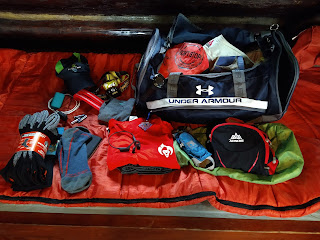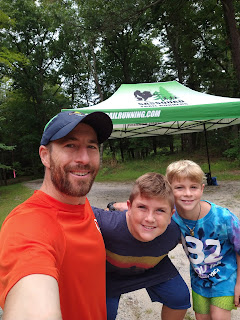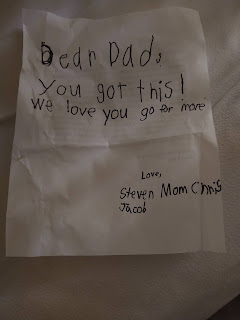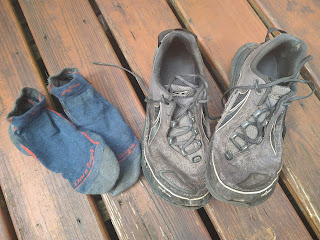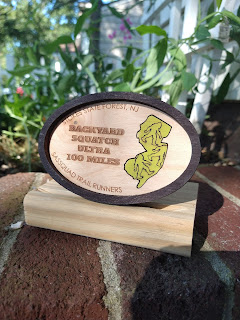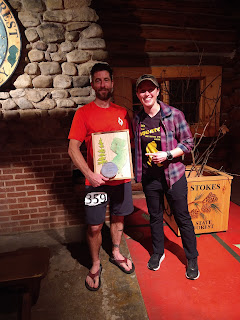 |
| When I got comfortable with an uncomfortable heat index of 109.7°F at Wildcat Ridge Romp. |
For me it’s usually a process of analyzing the situation and going through a checklist of questions:
1. How bad is this and is it going to worsen?
This is the “don’t fix what’s not broken” stage. If it’s not that bad, just don’t worry about it. Eventually it will probably resolve itself or you’ll just grow accustomed to the minor discomfort. View this as an opportunity to set your baseline threshold for discomfort. If you run long enough, there is going to be some level of discomfort at some point. When that discomfort begins to appear, greet it with open arms. Be grateful it is no longer hiding in the shadows. Use this baseline discomfort as a measurement tool to determine if it’s increasing or just persisting.
2. Is there anything I can do to resolve it right now?
Fix it if you can. The example of debris in your shoe is the classic example of this. Stop and get the crap out of your shoe before it creates a larger problem like a blister. If you can’t fix it now, can you fix it at the next aid station? Is it chafing that some vaseline will resolve? Aid station volunteers are some of the most helpful groups of people I have ever met. I believe they genuinely want to see all runners succeed and they will do whatever they can to assist with that. Just ask for help.
3. How serious is this and am I going to further injure myself if I continue?
This is the million dollar question. Sometimes distinguishing between superficial and serious injuries can be difficult, especially when your mind and body are both exhausted. Phantom injuries can quickly not only justify accepting a DNF, but convince you that it is the smart thing to do. Do your best to assess the pain/injury as objectively as possible. Try to get a third party opinion from someone who wants to see you keep going (like an aid station or medical volunteer) and not from someone who it will hurt to see you suffer (like a spouse, assuming your spouse is not a masochist).
It’s the reaction to the discomfort that is really important and to me that is what the phrase is all about: YOUR reaction. Of course I am not suggesting that you hobble the last 20 miles or so of an ultra on a broken leg or continue on after suffering a bad fall and showing signs of a concussion. Injury is a valid and respectable reason to DNF. I am not a big fan of another common phrase (“Death Before DNF”) that makes its way around the ultrarunning world. I mean, I like the idea of refusing to quit, but I don’t take it that far. I’m pretty sure people say it because they think it sounds kinda badass, but when you evaluate it a bit more honestly I would hope you realize rather quickly that you are more valuable to someone alive than dead at an ultramarathon. I know that’s the case for me.
So I encourage you to get comfortable with being uncomfortable, but only to a certain degree. You don’t want to cause further injury or do irreparable harm to yourself just to finish a race. Sometimes it feels like a fine line to walk, but I guess that’s part of the fun of ultras. There’s so much uncertainty and so many “what if”s. And that’s part of the reason why I am so drawn to them. They’re challenging and complex in so many regards for achieving the simple purpose of getting from point A to point B as quickly as possible.






